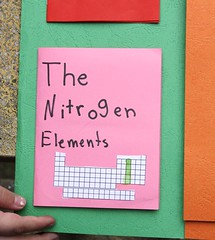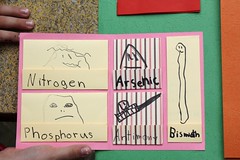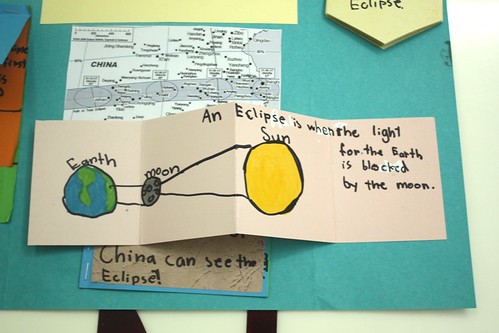I am frequently asked questions about how we homeschool.
Since I can't invite you all over to my house to show you how we do it, I thought that
on Fridays, I'd try and share different creative ideas that we use to homeschool.
Last week Jimmie from Jimmie's Collage introduced us to lapbooking and shared
with us some of her Flickr Photos of lapbooks that she has created.
This week she is going to be sharing how minibooks create a physical scaffold
for the information that goes into our lapbooks.
--------------------------------------
When you select a minibook that matches the type or amount of


Since I can't invite you all over to my house to show you how we do it, I thought that
on Fridays, I'd try and share different creative ideas that we use to homeschool.
Last week Jimmie from Jimmie's Collage introduced us to lapbooking and shared
with us some of her Flickr Photos of lapbooks that she has created.
This week she is going to be sharing how minibooks create a physical scaffold
for the information that goes into our lapbooks.
--------------------------------------
When you select a minibook that matches the type or amount of
information, you have created a physical scaffold for the information.
This learning scaffold makes the ideas easier to understand and to remember. Young
children are not abstract thinkers. Anything a homeschool mom can do to make that
understanding tangible will help the children to learn.
Minibooks can make ideas more concrete.
Minibooks can make ideas more concrete.
Take this solar eclipse minibook as an example. This simple accordion fold book
divides the information visually into four parts: the earth, the moon, the sun, and a
panel for explanation. The folds of the book itself contribute to the
significance of the science facts in the book.
Without the earth, moon,and sun lined up correctly, there is no solar eclipse.
Yes, the same idea could be represented on a plain sheet of paper, but the folds help
to outline the facts in a very visual way.
Without the earth, moon,and sun lined up correctly, there is no solar eclipse.
Yes, the same idea could be represented on a plain sheet of paper, but the folds help
to outline the facts in a very visual way.


Another example is from a Chemistry lapbook.
This minibook features the five elements in the Nitrogen family.
Each element gets its own matchbook within the larger folder. So the physical minibook
This minibook features the five elements in the Nitrogen family.
Each element gets its own matchbook within the larger folder. So the physical minibook
reflects the reality that these elements are all
different (separate matchbooks) but related (placed in a single minibook).
different (separate matchbooks) but related (placed in a single minibook).
There are myriad ways to organize information, so don’t worry about getting it
wrong. But do be deliberate to match the minibook’s layout and its folds with the contents.
If your material is three steps, have a three flap layered book (or four flaps if you leave one
for the title page). If your content is a list of equally important information, a wheel book may
work well. Don’t be obsessive over making the content match the form, but do keep it in mind.
If your material is three steps, have a three flap layered book (or four flaps if you leave one
for the title page). If your content is a list of equally important information, a wheel book may
work well. Don’t be obsessive over making the content match the form, but do keep it in mind.
What is so important about organizing information?
The answer is writing.
The same mental process involved in
The answer is writing.
The same mental process involved in
dividing information into a minibook is used in composition.
In fact, you can look at most minibooks as paragraphs. The title page is the
topic sentence, and the pages or flaps are the main ideas in the paragraph. There is a
direct application from minibooks to organizing paragraphs and even essays. That makes
minibooks tiny, movable graphic organizers.
If you have questions about how to use lapbooking, please feel free to leave
them in a comment below. I’ll check back and provide my answers. And, readers, please
feel free to answer each other’s questions. We all have something to offer.
Jimmie Lanley is the mother of one creative twelve year old daughter.
Jimmie's Collage is where she blogs about her Charlotte Mason styled homeschool.
Jimmie's Collage is where she blogs about her Charlotte Mason styled homeschool.
The Notebooking Fairy features free notebooking printables and how-tos plus the affordable eBook guide Notebooking Success.


2 comments:
Thanks for sharing. I am in the process of planning out my switch to CM homeschooling. I now have Jimmie's Collage bookmarked. Yeah!
This is the nice and impressive way to spread awareness through the children and in the adult world. Hats off teachers and schooling system. I once joined affordable ghostwriting agency and they used to do the same exercise to give awareness to the children's and parents and to introduce the new skills among the children.
Post a Comment